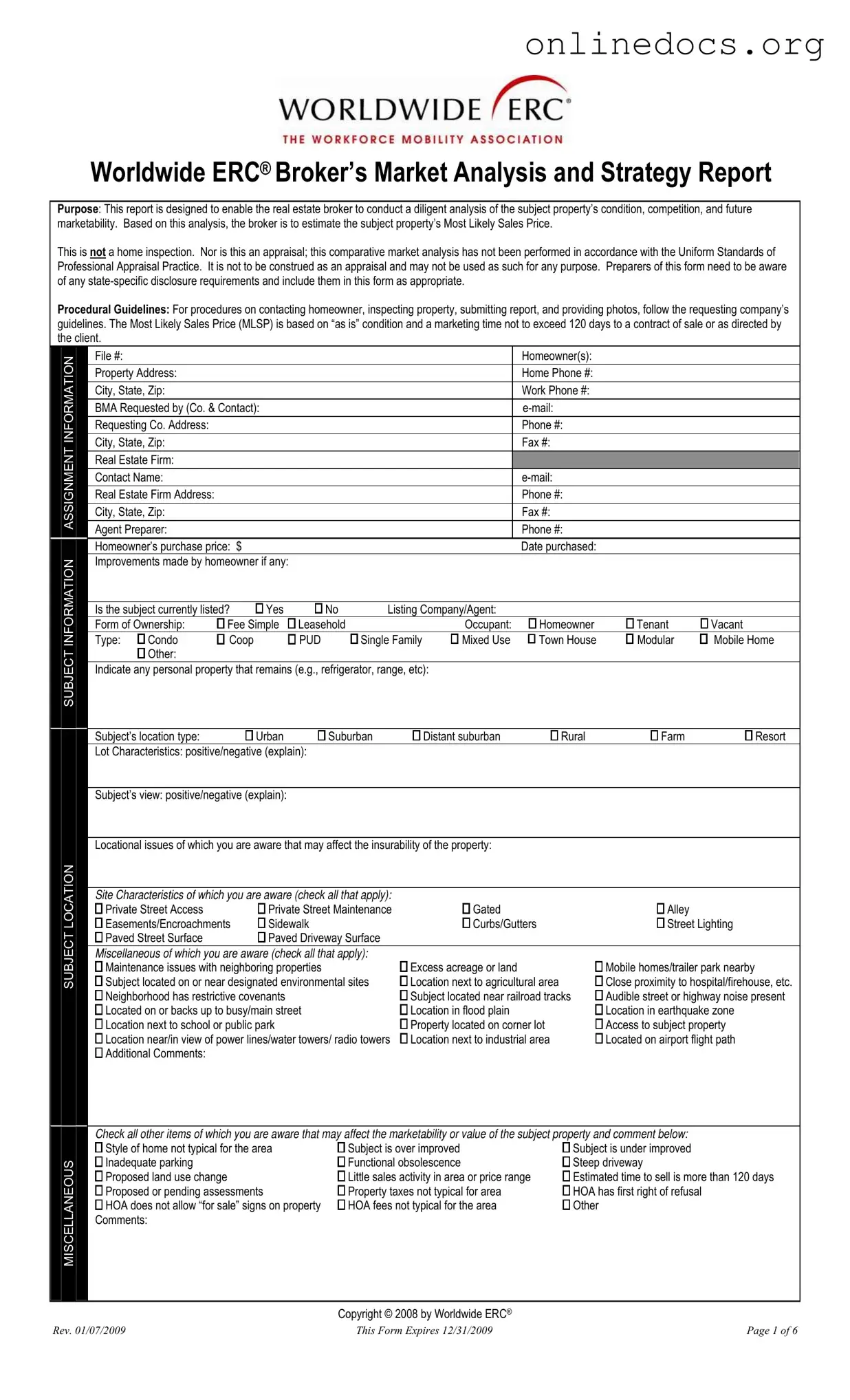The Comparative Market Analysis (CMA) is a common tool used by real estate agents to determine the value of a property. Similar to the ERC Broker Market Analysis, a CMA evaluates recent sales of comparable properties in the area. It helps agents suggest a listing price for sellers or a purchase price for buyers. The focus is on local market conditions, trends, and the specifics of the property, making it a vital resource for informed decision-making in real estate transactions.
Ensuring clarity in any transaction is essential, much like the importance of utilizing the California Dog Bill of Sale form to document the transfer of dog ownership; for further assistance, you can visit fillpdf-forms.com/ to obtain the necessary paperwork.
The Property Appraisal report serves a similar purpose in assessing a property's value, but it is more formal and follows strict guidelines. Conducted by a licensed appraiser, it involves a comprehensive inspection of the property and an analysis of the local market. While the ERC Broker Market Analysis estimates a Most Likely Sales Price, the appraisal provides an official value that is often required by lenders for mortgage purposes. Both documents aim to provide an understanding of property value, yet they differ in their level of detail and formality.
The Home Inspection report focuses on the physical condition of a property rather than its market value. Inspectors evaluate structural elements, systems, and safety features, identifying any issues that may affect the property's livability or safety. While the ERC Broker Market Analysis assesses marketability, a home inspection is essential for buyers to understand potential repair costs. Both documents are crucial in the real estate process but serve distinctly different roles.
The Listing Agreement outlines the terms between a seller and a real estate agent. It specifies the agent's responsibilities, the duration of the agreement, and the commission structure. Like the ERC Broker Market Analysis, it is a foundational document that helps define the selling process. However, while the Broker Market Analysis provides insights into pricing and market conditions, the Listing Agreement formalizes the relationship and expectations between the seller and the agent.
The Seller Disclosure Statement is another important document that shares information about the property’s condition and any known issues. This form protects buyers by ensuring they are aware of potential problems before purchasing. Similar to the ERC Broker Market Analysis, it emphasizes transparency and can impact a property's marketability. Both documents aim to inform potential buyers but focus on different aspects of the property.
The Marketing Plan outlines strategies for promoting a property to potential buyers. It includes details on advertising, open houses, and other outreach efforts. Like the ERC Broker Market Analysis, a marketing plan is essential for successfully selling a property. While the Broker Market Analysis assesses the property’s value and competitive position, the Marketing Plan focuses on how to effectively reach buyers and highlight the property’s strengths.
